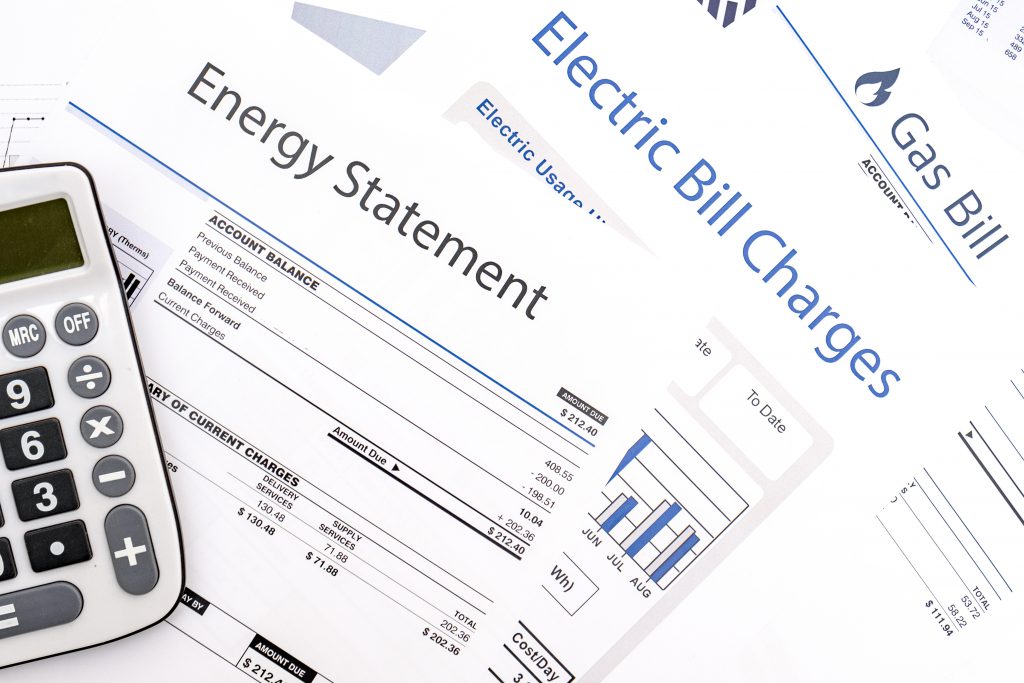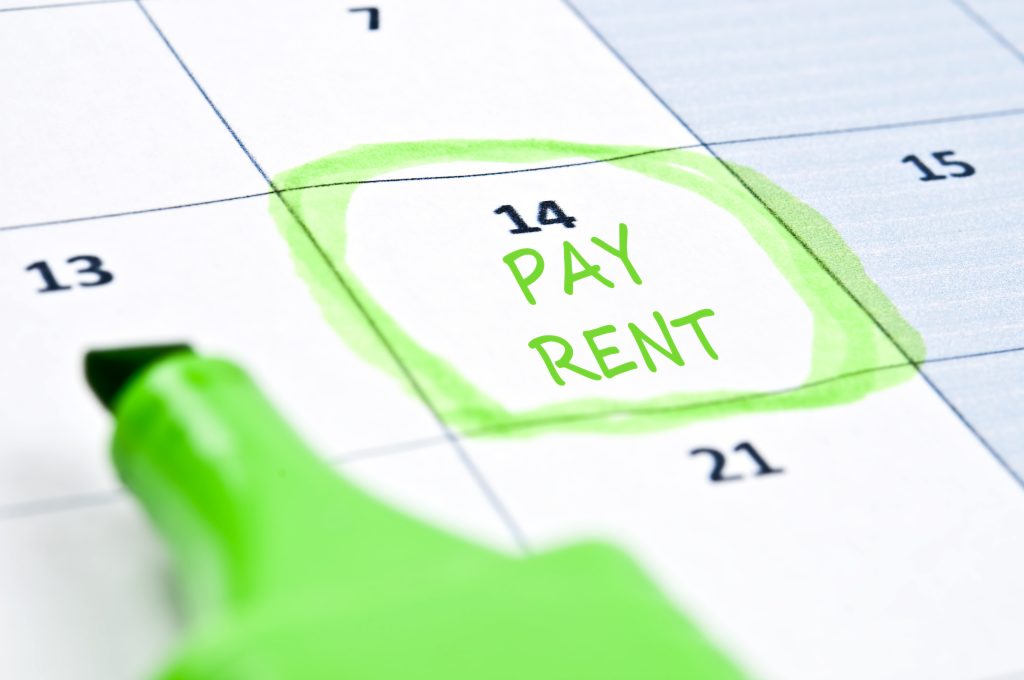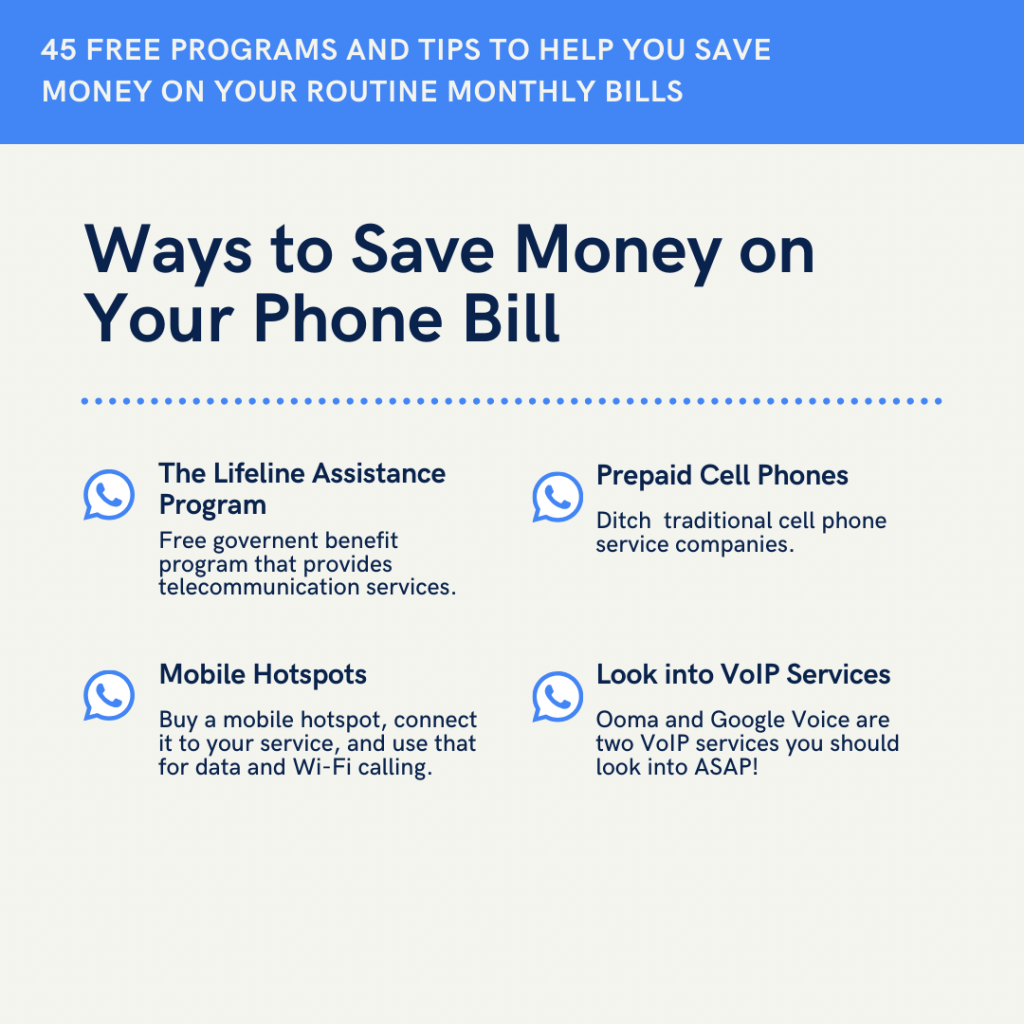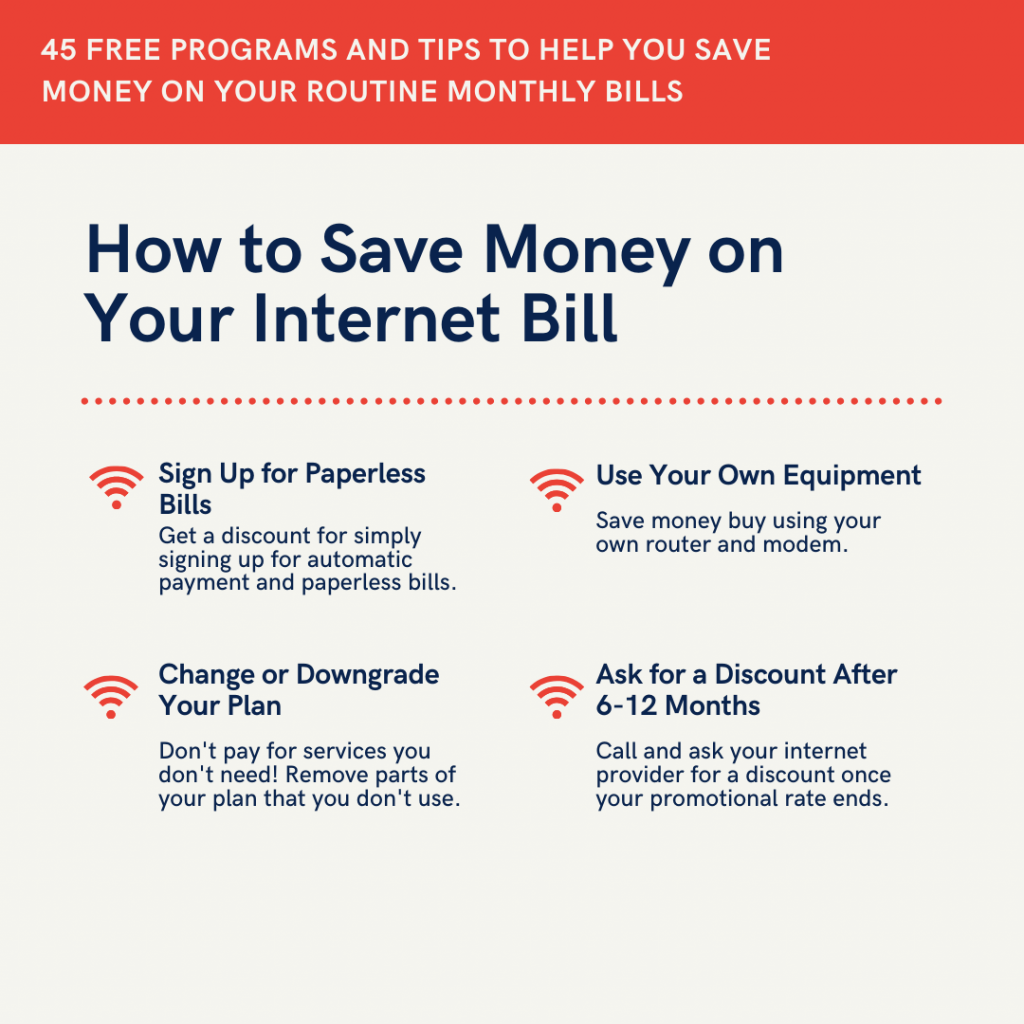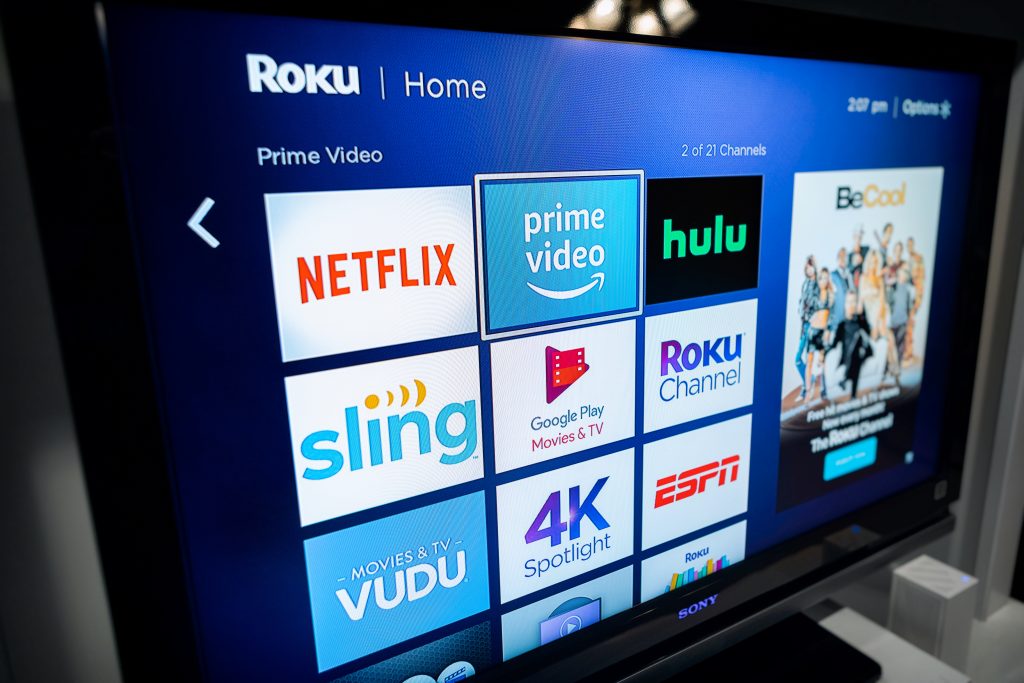It’s been pretty tough economically. Millions of Americans are struggling financially due to various crises, and thousands of businesses are affected. As a result, it can be difficult to stay afloat and pay all of your monthly bills. How do you save money on bills?
The stress of not being able to pay all of your bills can be incredibly high. Plus, when you’re struggling financially, you may need to cut out a couple essentials like cell phones or even food. Indications show that we have a tough road ahead of us.
There is some help out there that will help you save money on bills and stay on top of your finances. With everything going on in the economy, now is one of the best times to think about how you can save and pay all of your bills, at least semi-comfortably. Once you are able to cut out some small things and make some tiny sacrifices, you’ll see how easy it is to save money. The key is to make small changes, and over time it will become big savings.
How to save money on bills 2022
In this article, you’ll find 45 free programs and tips to help you save money on bills. You may take your routine bills for granted, and you may not even realize how easy it is to save money on these regular expenditures. Yes, you can get your routine bills lower. There are even some government assistance programs that you can apply for and get help to save money on bills. Read below and see if you can take advantage of any of these programs and tips:
Save money on energy and water bills in 2022
Apply for the low-income home energy assistance program (LIHEAP)
The government assistance program called Low Income Home Energy Assistance Program, or LIHEAP, helps low-income households with various financial situations and bills. If you qualify, you can get assistance with the following:
- Heating and cooling energy bills
- Bill payment help
- Assistance for energy crises
- Weatherization and energy home repairs
In order to qualify for LIHEAP, you need to be financially in need of home and energy assistance, and have an annual household income that meets specific limits, which can be seen on the benefits.gov official website. You may also qualify if you already participate in another government benefit program such as the
Supplemental Nutrition Assistance Program (SNAP), Supplemental Security Income (SSI), Temporary Assistance for Needy Families (TANF) or certain Veterans benefits.
To see if you qualify for this benefit and save money on bills, contact your local LIHEAP office, or visit this eligibility tool on the benefits.gov website.
Look into the weatherization assistance program
The Weatherization Assistance Program helps low-income Americans lower their home energy expenses by reducing their overall energy usage. The program does this by installing energy conservatory methods in their home, which creates a safer, more energy efficient power usage. Over time, these energy saving measures lower the cost power bills.
The program specifically tries to provide assistance to those prone to needing income assistance, such as families with children, seniors, and people with disabilities. If you are approved for the program, your local program agency will perform testing to diagnose your home’s energy efficiency, and will then outsource the work to private contractors to complete any necessary work.
Each state has its own eligibility rules, but generally, if you make below the poverty level in your state, and you can prove you are a state resident, then you may qualify for the program. You can check eligibility here.
Get a home energy audit to find leaks
If you notice that your energy bills have gotten higher and higher in recent months, or even years, then you could have a leak somewhere. It could be an outside valve, or even the energy meter causing you to have a spike in power usage and costs. If you call your local utility company, and explain the situation, just ask them to come and do a home energy audit. It is usually free of charge, but if they do charge, it is normally a small fee. They will help you find where your home is potentially leaking energy. If you find the leaks and fix it, you could potentially save hundreds of dollars a year.
Maintain your appliances
Your home’s appliances may actually be costing you money in the long run. If you notice that your energy bills have gone up, you could have appliances that either need to be cleaned, or require minor fixes. For example, make sure you are changing your air conditioning filters every 30-90 days (depending on which filters you install, check your filter for specific timing). You could clean your air conditioner’s condenser coiler, change your furnace’s filters, and clean out your dryer’s lint trap.
If you are renting your home or apartment and you suspect an appliance needs to be cleaned or fixed, make sure you ask your landlord for help.
Make sure your water heater isn’t too high
Did you know that your water heater can make up to 25 percent of your costly energy bills? Many times your water heater is simply set to too high of a temperature. If you are using more energy than needed, then you will be charged more than needed. You’ll save 3-5 percent for every 10 degrees you further lower the setting. A temperature set to 120-140 degrees Fahrenheit is sufficient, however try not to go below 120 degrees or else you risk letting bacteria grow in the water tank.
If you enjoy very hot water, you could use a fiberglass insulating blanket while lowering your temperature settings. Simply wrap it around your water heater to decrease heat loss.
Turn your thermostat up or down one degree
This may be something you have heard many times before, but this tip does work. Simply turn down your thermostat one degree in the winter, and turn it up one degree in the summer. Experts like EnergySavers.gov claim that you can save one percent energy costs per every degree changed, as long as you let that change last for eight or more hours. You can definitely save a lot of money just by making one small easy and free change!
Unplug unused devices
Another tip you may have heard before is to unplug your devices, appliances, and chargers/charging strips when they’re not in use. Many electronic devices simply drain power, even when you are not using them, just having them plugged in uses micro energy. All of these devices over time make up a lot of money.
One thing you can do it make sure you are unplugging devices is to get several power strips. Plug in multiple devices into one power strip so you can turn it off with one button. Better yet, there are relatively inexpensive auto-sensing power strips that will cut off all power when the device is off. To see how unplugging your devices save your money, check out this website.
Run your dishwasher, washer, and dryer full and off peak hours
Another easy thing you can try to do is to run your dishwasher, washer, and dryer only when they are full, and only during off-peak hours. If you run these appliances only when they have a full load, you make sure that they are cleaning at their most efficient. These appliances are designed to run as workhorses, and if you are running them more often with less items, you are wasting energy over time.
If you run your dishwasher, washer, and dryer when most people are either out of the house or asleep, you don’t have to cool your house because the appliances are running when other devices are on. Some utility companies even charge you for lower rates during certain times of the day, so take advantage of this if your company offers it. Call your utility company to see if they offer off-peak hour rates. This is an easy way to save money on bills.
Save money on housing and rent costs
Temporary Assistance for Needy Families (TANF)
Another government assistance program that could help you save money on bills is Temporary Assistance for Needy Families, or TANF. TANF is run by federal grants given by the government, which is distributed among a state level.
The program assists by helping you achieve self-sufficiency. TANF helps your family with basic needs that will help you financially and with support services. Besides basic finance and bill assistance, TANF may help with job preparation, work assistance, childcare, and pregnancy prevention.
Each state runs their own TANF program, and as a result, the program may differ from state to state. Your state may provide one thing that another state may not. Since the states decide on the design of the program, the type of payments given, the range of assistance, and the qualifying rules may be different for each state.
To see if you qualify, you must ask the TANF agency in the area you live in whether you are eligible to receive financial help or other program services. You could also visit this website to locate your nearest TANF program office.
Housing Choice Voucher Program (Section 8)
Often known as Section 8, the Housing Choice Voucher Program is another federal government assistance program that will help with your finances. In this case, Section 8 assists low-income families, seniors, and disabled citizens get private housing. If you qualify, Section 8 will help you be able to afford housing in either a single-family home, town home or apartment.
If you are eligible for Section 8, you will receive financial help in the form of a voucher that you can use to rent your choice of home. You do not have to live in a home located in subsidized housing. As long as the landlord or company allows Section 8 vouchers in the form of payment, you could rent the home.
The vouchers are given locally by your nearest public housing agency, or PHA. Once approved for Section 8, your PHA receive the funds from the U.S. Department of Housing and Urban Development (HUD). The PHA then helps the family find suitable housing that allows payment of Section 8, which may even be your current residence. All rental housing must meet the standards as determined by the PHA.
Once you find suitable housing, the PHA pays the rent directly to the landlord on behalf of you and your family. If your rent is larger than the amount of Section 8 vouchers you receive, you could pay the difference. As you can see, this program enormously helps save money on bills as it helps take off the major burden of rental payments.
To find your nearest PHA, visit this website’s locator tool.
Public housing assistance
The Public Housing Assistance program provides rental housing for eligible low-income families, seniors, and those with disabilities. The federal government program is run by the U.S. Department of Housing and Urban Development (HUD), which gives financial aid to housing agencies that manage the housing.
Public housing may be single family houses, a town home, or apartments in small or high-rise buildings. You could qualify for a public housing if you have an annual gross income below the specifically determined poverty level. You may have to provide references in order to receive public housing.
For more information, visit the HUD’s website here.
Refinance your mortgage
Do you own your home? Are you struggling to pay your monthly mortgage, or find it hard to pay all of your routine monthly bills after paying your mortgage? If you answer yes to these 2 questions, then one of the easiest ways you can save money on bills is to refinance your mortgage.
Refinancing your mortgage’s interest rate could help you save hundreds of dollars off your routine monthly mortgage payment. You may need to see if your mortgage company offers this option, but generally, most do. Many companies have entire departments trained to help you refinance your mortgage. You could also try using the assistance of an outside company.
Check out this website to see whether refinancing your mortgage is something you’d be interested in doing. If it is, then the first thing you need to do is to call your mortgage company and ask about refinancing. Also check out this article about real estate investment tips for more help on mortgages and refinancing.
Remove mortgage insurance
If you pay for something called mortgage insurance with your regular monthly mortgage payment, and you have reached 20% or more equity of your home, then you may want to remove your mortgage insurance by your mortgage company. This high-cost measure is unlike homeowner’s insurance, and is something that you pay for that often isn’t for your protection, but for the bank. Once you have 20 percent or more equity, you could ask to remove it, or in some cases, it may be required for them to remove it.
If you have a FHA loan, or if you are considered a “high-risk borrower,” you may not qualify for this money saving tactic right away. Ask your bank or mortgage company for information on these requirements or for more assistance to save money on bills.
Find cheaper homeowner’s insurance
Forget being loyal; if you are strapped for cash, you could dump your homeowner’s insurance and find a cheaper policy elsewhere. You could get a quote off of major insurance companies’ websites like Geico, Progressive, State Farm, and more. If that quote is less than what you currently pay, by all means switch!
Shopping around could help you save hundreds of dollars every year, just by spending a couple hours of research.
Mow your own grass and rake your own lawn
Another routine monthly cost you may be overpaying for is lawn care. Instead of paying a couple people to mow your grass and rake your lawn, you could pocket that monthly cost and save money on bills by just doing it yourself. You do need to invest a little bit of money into a lawn mower, a rake, and some gloves. Many home improvement stores offer discounts on these items during the spring and summer time. Plus, you only need the basic tools to do it on your own. The small investment made will turn into a larger profit in the long run!
Save money on phone and wireless bills
Apply for Lifeline Free Cell Phone Program
Now more than ever, having telecommunication services is extremely important. Having a cell phone and keeping in contact with friends and family is no longer a benefit but a necessity. You don’t have to choose whether you can keep your cell phone on anymore if you sign up for the Lifeline Assistance Program, or commonly but not officially called “the Obama Phone”.
The Federal Lifeline Assistance Program is a government benefit program that provides basic telecommunication services to low-income individuals and households. If you are eligible for the program, you can get these services for a discounted rate, but most of the times services is free.
The Lifeline Program is incorrectly called “the Obama Phone” because it became widely known during President Obama’s tenure. However, the program was started in the 1980s under the Reagan Administration. The program, which is run by the Federal Communications Commission (FCC), was updated in 2005 under the Bush Presidency to include wireless phone services.
There are many providers of the Lifeline program. These providers receive funds from the FCC to administer the program benefits to those who apply and are qualified. Many providers offer a free cell phone and free monthly minutes, although benefits vary by provider.
Eligibility for Lifeline varies by state, however, generally you could qualify for the program if you already participate in a government benefit program like Medicaid or SNAP, or if you meet state specific income criteria. For more information, and to learn about available Lifeline providers, visit the FCC’s website.
Get free service through Q Link Wireless
If you’re looking to get the most out of the Federal Lifeline Assistance Program, then signing up for service through Q Link Wireless may be your best bet. Q Link Wireless is one of the nation’s largest Lifeline service providers, and offers a variety of benefits to qualified people who apply and are approved for service:
- 3 Gigs high-speed data every month
- UNLIMITED talk & text
- The option of adding more minutes and data every month for a small fee
For more information about Q Link Wireless, or to apply, visit their website here.
Get a prepaid cell phone
If you don’t qualify for the Federal Lifeline Assistance Program, you could still save a lot of money on your cell phone bills by using a prepaid cell phone service.
You are not required to use traditional cell phone companies such as Verizon and AT&T. Instead, a no contract phone service from companies like Republic Wireless, Metro PCS, or Straight Talk will set you only about $40 every month for phone services on 2 phones. Several companies offer competitive rates based on the type and amount of cell service you want. One of the only downsides of using a prepaid cell phone is that you have to buy your own phone before using it for service, and you can’t subsidize it like on traditional contract plans. However, you could simply buy one secondhand, or look for monthly phone deals.
Look into Ooma Phone Service
You already pay for internet services, so why should you pay for landline cell phone services as well? There is something called VoIP, which allows you to make phone calls using your internet connection. One of the biggest and most-talked about VoIP services is Ooma. You simply pay a one-time fee for a Ooma Telo device (price varies, but generally around $140), which you then use to make unlimited calls within the U.S. using your internet connection. You may have to pay local taxes for your area (a very small fee), and you can use your current landline phone number for a fee.
Check out Ooma here and see if you could save money by ditching your landline service and using VoIP.
Use Google Voice
Another VoIP option, and perhaps a little more well-known, is Google Voice. By signing up with Google Voice, you will get a dedicated phone number. Then, you can make unlimited free phone calls with Google Voice by simply adding your Google Voice number to your “Friends and family” or “My Circle” plan (this depends on your phone carrier). You may also use it to send text messages, and a whole variety of options. Check out Google Voice here and start saving money on your landline services!
Look into mobile hotspots
Another option for cell phone service is to purchase a mobile hotspot and use it for service with major carriers. Here’s what to do:
- Buy a mobile hotspot. You can buy one from any major retailer, or directly with your phone carrier.
- Pay a monthly fee to use that hot spot. Usually you’ll be using your carrier’s prepaid services. Generally these fees are less expensive than a cell phone plan.
- Connect your phone’s Wi-Fi to your hot spot and use it instead of data.
- You could even use the Wi-Fi to make phone calls, and potentially ditch your traditional phone service.
Research your options by looking at your carrier’s website for mobile hot spot plans.
Save money on internet costs
Sign up for automated or paperless billing
Did you know that you can get a small discount on your monthly internet service by just signing up for their automated paperless billing? It costs your internet service company money to print out and mail your paper bills every month. So, to save them some money, they ask you to sign up for paperless billing. As a trade-off and incentive, they may save money on bills just for asking them to send you a bill through your email instead of the mail.
Ask your internet provider if this is something they offer. You may also be able to see that option in your settings when you log into your account on your internet service provider’s website. It takes seconds to do this and you’ll once again save money on bills.
Get your own router and modem
Many internet service providers charge you a monthly fee for using their provided router and modem. It can be anywhere from $5-$10 just for using their products. Instead, look into buying a router and modem (or a combined router and modem all-in-one device) from a major retailer and using that to receive internet services. You can often find deals and discounts using Amazon or eBay (just make sure that you are buying sealed products and not previously used devices). This small fee will add up over a long time.
So save money on bills and ask your internet service provider for a list of accepted router and modems you can use instead of their provided ones.
See if you qualify for an employee discount
There are many partnerships between American internet providers and businesses. Often times, these partnerships allow employees of certain businesses get a discount on their monthly internet bill. First, ask your HR department whether your company has a partnership with any internet providers. If your company does, you may need to sign up for services through a website. Or, you can ask your internet provider for assistance, and they will walk you through the process of applying your discount to your service. This is another easy way to save money on bills.
Negotiate for a better rate after 6-12 months of loyal service
Many internet providers offer you a promotional rate when you initially sign up for service. Then, after six-12 months your bill will increase dramatically when your promotional rate is used up.
You don’t have to always settle for this more expensive price. All you have to do is ask a customer service representative nicely for a lower rate. Here are some tips on achieving this:
- Call and state that you are a loyal customer, but you cannot afford the current rate you have.
- Ask for an extension of your promotional rate.
- If the representative is unable to offer another promotional rate, see what the price will be if you downgrade your plan.
- If you are unsatisfied with that price, ask to speak with the customer retention department.
- Be nice and courteous. Representatives would rather help people who ask nicely over those who demand.
Even if the above doesn’t work, calling your internet provider will give you an idea of what other plans they offer and whether the pricing will better fit your budget and save money on bills.
Change or downgrade plans
Do you really need that highest-speed internet package? Are you paying for a speed faster than you need, and thus paying for services that you’re not using? Many internet providers like to give promotional rates on their fastest services, and then once that rate ends, you’re stuck paying a high rate on services you just don’t need. Instead of paying for these services, call and ask your provider what alternatives they can provide for you. A simple question on the difference between plans will help you decide whether you are over paying for stuff you just don’t need.
Save money on insurance bills
Apply for the adjustable rate mortgage insurance
Did you know that there is a government benefit program for mortgage insurance? This program, called the Adjustable Rate Mortgage Insurance helps qualified low-income individuals or couples buy a single family home in which they intend to live in. If you are looking to buy a home to rent out, you will not qualify for this program.
This program is run by the U.S. Housing and Urban Development (HUD), which uses the Federal Housing Administration (FHA) to lend money directly to eligible home buyers. The FHA uses approved lenders to distribute the home buying funds.
In order to qualify for the Adjustable Rate Mortgage Insurance, you must fulfill the following criteria:
- Live in the home you want to purchase
- Meet the necessary cash investment, mortgage payment, and basic credit requirements
- Apply for the home mortgage loan through an FHA-approved lending company or lender
If interested, contact an FHA approved lender for more information. You can find a FHA approved lender here. For more information on mortgage rates and insurance, check out the Real Estate Investment Guide for 2020.
Sign Up for insurance through the marketplace at healthcare.gov
We know that health insurance can be expensive. While more employers and companies are making health insurance a standard benefit for their employees, there are still many people who are not covered. Plus, if you are a freelance worker, or a self-employed small business owner, you are responsible for buying your own insurance policy for yourself and your family.
To help take the burden off this large monthly expense, the Affordable Care Act of 2010 established the health insurance marketplace to help offer affordable or benefit-discounted insurance plans for underinsured Americans. Often called “Obama Care” The marketplace is basically a platform that offers insurance plans to you and your family and small businesses. While some states offer their own health insurance marketplace, the federal government manages healthcare.gov, which is the main exchange for residents that do not have their own state-run marketplace.
If you would like to take advantage of health insurance through the marketplace, you can apply during the open enrollment periods, which is typically during November and December. However, if you recently lost your job and/or insurance plan, you had a child born, or you got divorced, then you may qualify for a special enrollment after proving your qualifying event with documentation.
Visit healthcare.gov for more information, and to apply for health insurance through the health insurance marketplace. Healthcare is one of the more expensive ways you can cut costs and save money on bills.
See if you qualify for Medicaid or Medicare
If you have very low income, you are 65-years-old and over, or you have a disability, then you may qualify for a special health insurance program run by the federal government. There are two separate health care programs called Medicare and Medicaid, both funded by different parts of the government, and serve two separate groups.
Medicare is a federal government benefit program that provides health coverage to those who are 65-years-old and over, or those who are 64-years-old and under and have a disability. If you meet either of these two criteria, then you qualify for Medicare, regardless of your income.
Medicaid is both a state and federally-run government benefit program that provides health coverage to individuals who have very low income, or children of parents with low income. With Medicaid, you must prove you have very low income by providing either your paystubs, or your previous years’ tax return.
You could be eligible for both Medicare and Medicaid, and you could have both programs. These two programs will work together to provide you with health coverage. You or your children could qualify for Medicaid and not even realize it. This program could exponentially help with the costs of health insurance. Call 1-800-MEDICARE or contact your local Medicaid office to learn more about these government programs and save money on bills.
Combine several policies for a discount
If you’ve been in a car accident, or you live in a “riskier” driving location, then having car insurance can be a pretty expensive monthly bill. You could reduce the cost of your car insurance and save money on bills by doubling or even tripling up on several policies in one company. You could potentially save 10-20 percent of your monthly car, renter’s, and homeowner’s insurance policies by combining all of your insurance into one policy. Some companies may offer you several discounts for each individual policy.
This tip will only help you save money if you actually need renter’s or homeowner’s insurance. And often times, even with combining policies, you could get cheaper individual rates by shopping around and seeing who offers the best rates possible.
Shop around every one to two years
It’s always a smart idea to look for cheaper insurance policies every 1-2 years. Whether its auto, home, renter’s, or health insurance, make sure you are getting the best possible rate every couple of years. There’s just simply too much competition around in the market for you not to get a better deal somewhere else. Plus, if you find a better deal elsewhere, call up your insurance policy holder, tell them the rate you were quoted, and ask them to match that price. Remember the goal is to save money on bills. Note that you must show that you are quoted for the same exact policy coverage, but generally, representatives will try and help you get that same rate.
Save money on student loan bills
Look into education loan consolidation
If you have more than one federal education loan, look into combining your loans into a direct consolidation loan and save money on bills. Doing so will give you a single monthly payment instead of several monthly payments. Loan consolidation will give you access additional benefits such as several loan repayment plans and loan forgiveness programs.
Doing a direct consolidation loan could lower your monthly payment because the program gives you a longer period of up to 30 years to repay your loans. Because the payments are stretched out over a longer period, the monthly payments are lowered. There is no fee to sign up for a Direct Consolidation Loan. Try not to fall for companies that offer consolidation for a fee. These companies are not affiliated with the U.S. Department of Education (ED). To sign up for a direct consolidation loan, visit the Federal Student Aid website here.
See if you can defer your loans temporarily
If you are running behind and need to save money on bills, sometimes all you need is short-term financial relief. Therefore, if you are in short-term financial trouble, you could qualify for a federal student loan deferment. With a loan deferment, you temporarily suspend your monthly payment for a specified amount of time. It could be anywhere from 1 month to 1 year of payment suspension, depending on your needs and your qualifications.
Keep in mind that your loan interest will continue to accrue during your loan deferment period. Your balance will continue to increase and you will still pay the interest over the life of your loan repayment.
Also, note that asking for loan deferment will not affect any loan forgiveness or loan income-driven repayment plan you are currently under. This means that the time you are under a loan deferment will not count towards your loan forgiveness or income-driven repayment plan. It will, however, continue once your deferment period ends.
Find out more information about this Federal Student Aid relief program here.
Ask if you qualify for an income-driven repayment plan
If you are not interested in applying for a loan deferment, there are other options to lower your monthly federal student loan bill. You could repay your loans under an Income-Driven Repayment Plan, which adjusts your monthly student loan payments to be more consistent and attainable with your monthly income. This will help you free up and save money on bills.
Most federal student loans are eligible to be under an income-driven repayment plan. These plans specifically set your monthly student loan payments to an amount that is determined to be more affordable based on your income and your family size. You prove your income by submitting your tax refund information for the previous year. Your payments will be adjusted every year you recertify for the plan and submit your yearly tax refund information. In some cases, your monthly payments could be as low as $0 per month. Note that just because your monthly payments are low or $0, your loans will still accrue interest, and will still need to be repaid over time.
The federal government offers the following four income-driven repayment plans:
- Pay As You Earn Repayment Plan (PAYE Plan)
- Revised Pay As You Earn Repayment Plan (REPAYE Plan)
- Income-Based Repayment Plan (IBR Plan)
- Income-Contingent Repayment Plan (ICR Plan)
If interested, apply for an income-driven repayment plan here.
Save money on banking and credit card costs
Always close old banking accounts
You may have noticed that fees for your old inactive bank account have started accruing. Some banks actually charge you for inactivity fees if you don’t use your old accounts. Banks could even charge you with erroneous fees just because they think they can. Don’t let this happen! If your old bank account is no longer useful to you, try and save money on these fees by closing your old account. It can save you money in the long run.
Sign up for fee-free banking accounts
In the age of everything digital, you may be wasting money on accounts with old brick-and-mortar traditional banks. Traditional bank accounts like to charge customers for a lot of things such as balances, transfers, bill pay, and even using the teller services.
You could sign up for fee-free accounts with an online bank. This will help save money on bills because many online banks don’t charge fees or require you to have a monthly minimum balance. Online bank accounts often offer more interest on your monthly balances, which actually helps you earn money over time instead of lose money. Here are some online banks:
Compare these banks by visiting their websites and see if you’d like to make the switch to an online bank!
Find a credit card with rewards
- American Express
- Chase
- Citi
- Discover
- Military-based companies like Navy Federal, USAA and more
Whichever card you choose, make sure you read your credit card agreement to avoid any erroneous fees.
Transfer balances to a lower interest credit card
You could save thousands of dollars in interest fees by shifting your credit card balance from one card to another lower-interest card. If you have a balance on a higher-interest card, whether it is a “starter” credit card or not, you could transfer that balance to a card that offers a lower interest rate.
Sometimes you may receive offers in the mail for temporary 0 percent interest. Take advantage of these offers, even if the company charges you a small fee to do the balance transfer. Plus, if you ask nicely, you could get that fee waived if you have been with the company for a long period of time. Over time the lower interest will combine to save money on bills.
Try and negotiate your interest rate
Similar to the tip above about saving money on your internet bill, you could simply call and ask to speak to a representative about lowering your monthly interest rate. Call up your credit card company, ask to speak to a representative in the retention department, and tell them that you have been a customer for a while and you’d really like some help with your interest rate. Sometimes you’ll get a representative that wants to help and will help lower your interest rate by a few percentage points. Doing so will help save money on bills.
Save money on TV, movies and entertainment bills
Cancel unwatched channels
You wouldn’t buy a pack of hamburger meat at the supermarket if you were vegetarian, right? So why would you pay for channels in your cable package that you never or rarely watch? Make sure you aren’t paying for channels you don’t watch by looking over your channel packages and seeing whether you’re simply paying for things you don’t need. Canceling some or most of your extra channels will definitely help lower your monthly cable bill and save money on bills.
Cancel your cable package
Similar to the above tip, if you are paying for a cable package full of services you don’t use or need, like your cable box or on demand services, call and cancel them. These are more extra costs that you are paying for that you could live without. So quit your TV cable package and ask for something that would save you money, and you could live comfortably with.
Use streaming services Like Netflix, Hulu, Amazon, Disney+
Streaming services are popping up like wildfire lately. However, it may be expensive to have both your cable package and multiple streaming services. You may save money on bills by canceling your cable services altogether and subscribing to several streaming services. There are a lot of services, but the main ones are
- Netflix
- Hulu
- Amazon
- Disney+
- Philo
Many times what one service doesn’t have, another does, so by having multiple services you fill in the gap of your entertainment needs. Plus, many of these services have combined streaming benefits. And often you’ ll find originally produced content that you can only watch if you’re a subscriber.
Look into getting a Fire TV or Roku
Another option to save money on bills is to get a Fire TV or a Roku, these small devices plug into your TV’s HDMI port, and connect to your home Wi-Fi to provide you with streaming services in an all-in-one hub. Both of these devices also allow you to download apps so you can watch free content on YouTube, Twitch, and more. You could even access movies and TVs from several channels. It’s a small fee to pay for a lot of cheap or free entertainment and save money on bills.
Change Your Xbox or PS4 gaming plans
If you are subscribed to an Xbox or PS4 gaming plan, odds are that you pay every month or every several months to use the service. You could pay less every month if you simply sign up to be billed for several months at once. For example, a gaming service could charge $9.99 per month if you pay month-by-month, but charge $24.99 every 3 months, which is a savings of 17 percent. Or, they could bill you $69.99 every 12 months, for a savings of 30 percent. It all depends on what your gaming service offers, and what you can afford at the time of subscribing. If you find you have a little extra month one month, look into buying multiple months at once to save money in the long run.
Ask your cell phone provider for free streaming services
A new incentive that many cell phone companies are offering is free streaming services included with their plans or packages. The following companies are offering these included services:
- Sprint offers Hulu with their Unlimited Basic, Plus, or Premium plans
- Metro PCS offers Amazon Prime Video with their unlimited plan
- AT&T offers HBO with their Unlimited Elite plan
- T-Mobile offers Netflix with their Magenta or Magenta Plus plans
- Verizon offers Disney+ for 1 year with their unlimited plans
So if you have any of the above cell phone services, you could save money on bills by simply being a customer!
One more tip!
Don’t be afraid to take advantage of multiple tips mentioned above to save money on bills. Even if you don’t qualify for any of the government benefit programs, you could actively save money on bills by being just a little savvy.
However, if you believe you are eligible for a government benefit program like Medicaid or Lifeline, sign up for it. Being a part of these programs will help you provide for yourself and your families, and offer you a better quality of life and save money on bills.
To receive FREE phone service, you first must be approved through the National Verifier. You can bring your own phone and keep your number to experience our 5G network coverage. We will ship you a FREE SIM Card Kit so you can get UNLIMITED talk & text if you already participate in government programs such as SNAP and Medicaid. Once approved, you can begin the phone activation process to receive FREE phone service online.
One of the easiest programs to sign up for is the government Lifeline Assistance Program. As mentioned above, this program is a federally funded benefit that provides 3 Gigs of Data, plus UNLIMITED talk & text. Since the application will not run a credit check, or make you sign a contract, signing up takes minutes and will help you save a lot of money on your cell phone bill. You may qualify for Lifeline if you already participate in another government benefit program like SNAP, Medicaid or Section 8. Or, you could qualify based on your annual income. Make sure you learn more about Lifeline to save money on bills; take a look at Q Link Wireless’ free service by clicking here now.
Other money saving posts you can read:
4 Easy Tips for Cell Phone Savings
College Student? You May Be Eligible For Something that Will Save You Precious Money
8 Ways to Lower Your Cell Phone Bills
FREE Cell Phone Service Unlimited everything for life 2022
[saswp_tiny_multiple_faq headline-0=”h2″ question-0=”What is the best way to save money on bills?” answer-0=”Save up to or more than $180 a month with Q Link Wireless and its free data, talk, and text plan. Start today. ” image-0=”164″ count=”1″ html=”true”]




